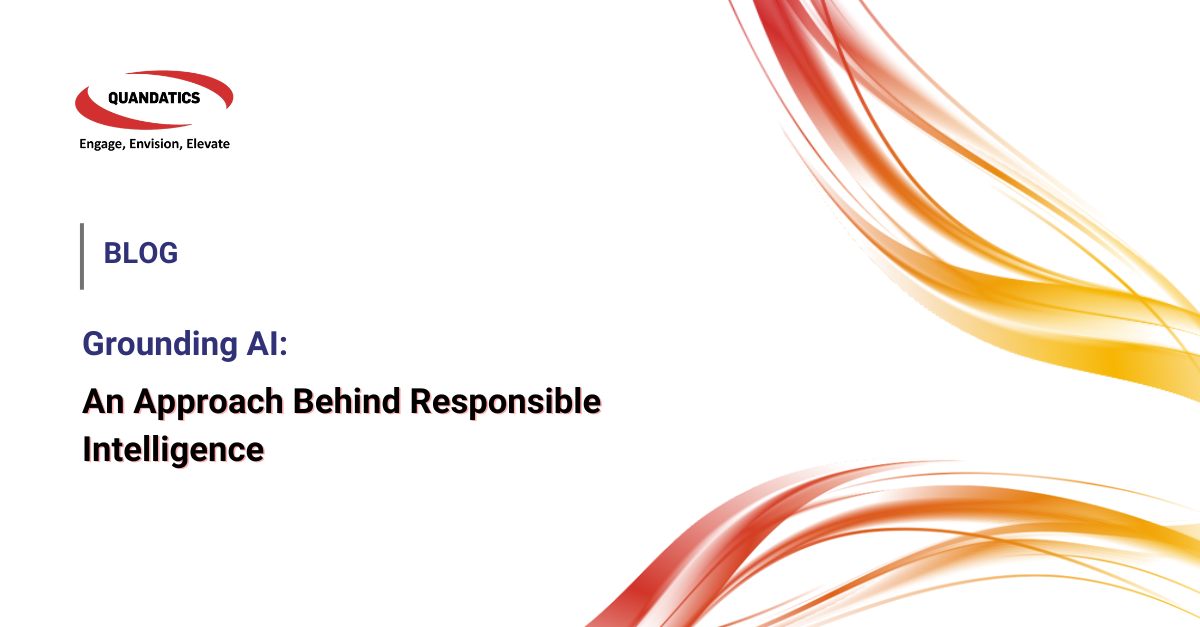Quandatics | June 3, 2025
What Makes an
AI Agent Tick?
AI agents are no longer a futuristic concept—they’re already reshaping how modern businesses operate. Acting as digital labor, they perform tasks, make decisions, and assist humans with minimal intervention, while continuously self-improving.
According to Forbes and Salesforce, we’ve entered the third wave of AI — centered around Agentic AI. These systems don’t just support work; they execute it with intent, autonomy, and adaptability, all guided by a set objective. With adoption growing globally across sectors, embracing this shift is becoming essential to maintain a competitive edge.
But before jumping into adoption, it’s critical to understand how AI agents work. Knowing their inner mechanism, how they perceive, reason, act, and learn—helps set the right expectations and ensures your organization is equipped to deploy them effectively.
AI Agent as a Digital Labour
Mechanisms Behind The Analogy

Eyes (User Interface)
- Captures user queries and displays insights
- Acts as the front-end touchpoint where humans interact with the AI system
- Receives input and visualizes output via app hosting platforms
Brain (LLM / Core Intelligence)
- Processes input using large language models like ChatGPT, LLaMA, Mistral, DeepSeek
- Plans tasks, reasons through logic, and retrieves relevant knowledge
- Drives task execution with autonomy and optimization logic
Mouth (API / Communication)
- Facilitates interaction between AI agent and external systems or tools
- Sends instructions, retrieves updates, and maintains workflow continuity
Hands & Legs (Tools / Actuation Layer)
- Executes real-world actions like sending emails, scheduling tasks, generating reports, etc.
- Performs the actual work based on the AI agent’s instructions
- Automates routine or repetitive tasks, increasing efficiency
Memory & Learnings (Database / Knowledge Base)
- Stores structured & unstructured data (PDFs, documents, databases)
- Uses vector databases and embeddings to retain context and enable retrieval
- Powers the learning loop by feeding data back into the system for better performance over time
This translates into increased productivity, reduced operational costs, and smarter, faster responses in business processes. Agentic AI isn’t just a tool — it’s a workforce transformation.
Disclaimer: The workflow and mechanisms described above represent a widely adopted conceptual framework for AI agents. The tools, models, and platforms mentioned (e.g., LLMs, APIs, feedback systems) are provided purely as examples and are not exhaustive or prescriptive. Depending on the complexity or specificity of a use case, alternative or customized architectures may be required.
Conclusion
Get a limited consultation on mapping
Agentic AI solutions to your business environment.
Ready to explore how AI agents can revolutionize your business?
Schedule a consultation today where we can offer the following:
- Showcase real-world AI agent demos
- Maping your business operations with Agentic solutions
- Assess your Data & AI Readiness to understand where you stand in your AI journey.
Contact us to start the conversation and unlock your potential!



